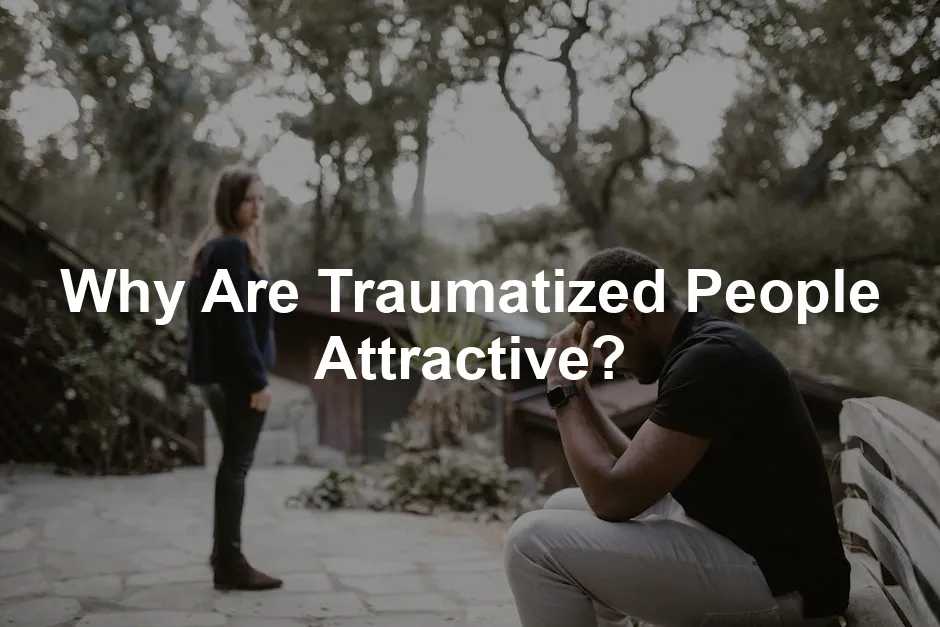
Why Are Traumatized People Attractive?
Introduction
In a world swirling with emotional scars, it’s curious why many feel drawn to those with traumatic pasts. Picture this: like a moth flitting toward a flickering flame, some find themselves irresistibly attracted to the intensity that trauma brings. It’s not just a whim; it’s a complex phenomenon rooted in psychology, emotion, and social dynamics.
People often associate trauma with depth. When someone has endured hardships, they carry stories that can captivate others. Their battles can evoke empathy, making connections feel uniquely profound. Many want to be the hero in someone else’s story, to help heal those wounds. After all, who doesn’t want to feel needed?
However, this attraction isn’t without its complications. Trauma is like a double-edged sword; it can forge intense bonds but also create tumultuous relationships. It’s important to recognize that while the allure of trauma can be magnetic, it can also lead to cycles of pain and emotional turmoil.
Moreover, our culture often romanticizes trauma. Films and novels depict characters with tragic backstories as heroic figures, igniting an allure that can skew our perceptions of real-life relationships. The lines between fiction and reality blur, leading us to chase that same thrill in our lives.
As we navigate this fascinating terrain of attraction, we must ask: what drives our attraction to traumatized individuals? Is it empathy, a desire to heal, or perhaps an unconscious reflection of our own struggles? Grab your emotional toolkit, as we unpack the layers of attraction, trauma, and the intricate dance of human relationships. Understanding this attraction can illuminate our own emotional landscapes, helping us foster healthier connections and break free from the chains of trauma-driven patterns.

Understanding Trauma and Its Impact
What is Trauma?
Trauma is a psychological response to distressing events. It leaves lasting emotional scars, often affecting how individuals navigate life. Imagine carrying an invisible backpack filled with heavy rocks; that’s what trauma feels like for many.
There are various types of trauma. Childhood trauma involves negative experiences during formative years, such as neglect or abuse. Emotional trauma stems from relationships and can include betrayal or loss, while physical trauma involves bodily harm. Psychological trauma encompasses mental struggles, including PTSD or anxiety from significant life events. Each type profoundly influences a person’s emotional landscape, shaping their thoughts, behaviors, and relationships.
For those looking to dive deeper into the effects of trauma, The Body Keeps the Score by Bessel van der Kolk is an essential read. It shares profound insights into how trauma affects our lives and offers pathways to healing.
The Psychological Effects of Trauma
Trauma significantly impacts personality and behavior. Individuals may develop anxiety, struggle with attachment styles, or exhibit heightened sensitivity. You might notice them hesitating to trust others. This is a direct result of their past experiences.
Trauma also reshapes relationship dynamics. People with unresolved trauma often find themselves drawn to partners who mirror their past. This can create a cycle of pain and healing. For some, it’s a familiar dance, where they seek out emotional highs and lows, unknowingly playing out their childhood dramas.
These patterns can lead to intense connections, but they often come at a cost. The emotional toll can be overwhelming as each person triggers the other’s wounds, creating a complex web of pain. Understanding these effects is crucial for fostering healthier relationships and breaking the cycle of trauma-driven attraction.
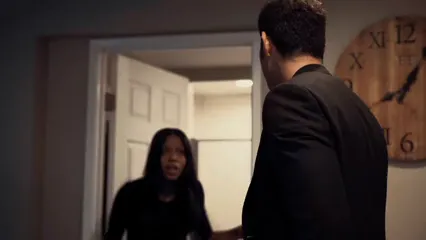
Trauma-Driven Attraction Explained
The Psychology Behind Attraction to Trauma
Attraction to traumatized individuals can be analyzed through various psychological lenses. One theory suggests that people are drawn to others who share similar emotional wounds. It’s like a silent bond formed in the shadows of shared suffering.
Empathy plays a vital role here. When one person recognizes another’s pain, they often feel compelled to help. This urge to heal can foster intense emotional connections. Imagine two puzzle pieces that fit perfectly, even if they bear frayed edges.
Moreover, the allure of rescuing someone can be intoxicating. The idea of being the hero in someone else’s story can create a false sense of purpose. However, this dynamic can also lead to unhealthy attachments, where one person seeks to “fix” the other, often neglecting their own needs in the process.
The shared experiences between individuals can create a deep-seated bond. This connection often feels magnetic, drawing people together in unexpected ways. However, it’s essential to recognize the potential pitfalls of such attractions.
Understanding these psychological factors can help individuals navigate their feelings and avoid falling into the traps of trauma-driven attraction. It’s a delicate balance of recognizing genuine connections while staying aware of the risks inherent in such relationships.
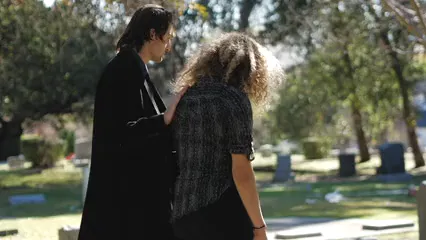
The Role of Trauma Bonds
Trauma bonds are intense emotional connections formed between individuals who share similar traumatic experiences. These bonds often develop unconsciously, leading to relationships that oscillate between passion and pain. Picture this: two people carrying emotional baggage, finding solace in each other’s scars. Unfortunately, this can create a cycle of highs and lows, much like a rollercoaster ride without the safety harness.
Trauma bonding often manifests through patterns of emotional highs and lows. For example, a couple might experience moments of deep intimacy followed by conflict that reflects their unresolved issues. This push-pull dynamic keeps the relationship alive, albeit in a tumultuous way. It’s like being caught in a storm—thrilling yet dangerous. In such bonds, individuals may feel a sense of belonging, even if it’s rooted in shared pain. This connection can be intoxicating but can also lead to unhealthy dependencies. Recognizing these patterns is essential for breaking free from the cycle of trauma-driven attraction.

The Chase and Adrenaline Factor
Emotional unavailability can create a thrilling chase. When someone is emotionally distant, it can ignite a sense of excitement. Think of it as a game of hide and seek where the thrill lies in the pursuit. This chase often feels addictive, drawing individuals into relationships that mirror their past traumas.
The excitement of “the chase” can lead to a cycle of seeking validation. Individuals may become fixated on the idea of winning over someone who is emotionally unavailable. It’s similar to a moth drawn to a flickering light; the allure can be hard to resist. However, this chase often masks deeper issues, like fear of intimacy or unresolved childhood wounds. When the thrill fades, individuals may find themselves facing the stark reality of their relationships, which can be emotionally draining.
This pattern can perpetuate unhealthy dynamics, leaving individuals feeling unfulfilled. Breaking free from this cycle requires self-awareness and a willingness to confront one’s own emotional needs. Recognizing that the chase is often a distraction from healing can be the first step toward healthier relationships.
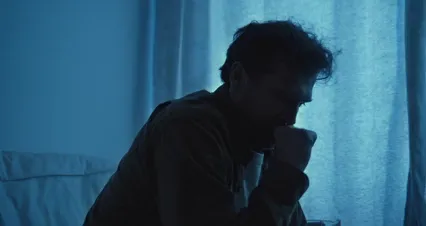
The Influence of Media and Fiction
The Romanticization of Trauma
Movies and literature often depict trauma in ways that make it seem alluring. Characters with tragic backstories are often portrayed as heroes, creating a narrative that glorifies pain. This romanticization can skew our perceptions of real-life relationships, making trauma seem attractive.
Films like A Star is Born and books such as A Little Life showcase characters that embody emotional struggles. These narratives can resonate deeply, as they reflect our own experiences or the experiences of those around us. When we see love intertwined with trauma, it can create unrealistic expectations about relationships. This can lead individuals to seek out partners who mirror these dramatic narratives, believing that such relationships are inherently passionate or meaningful.
Popular culture reinforces these themes, leading many to subconsciously pursue individuals with emotional wounds. The allure of being part of a dramatic story can overshadow the potential for healthier, more stable relationships. As these depictions become normalized, they can distort our understanding of love and connection, making us overlook the importance of emotional health.
Moreover, the impact of media can shape real-life behaviors. When people view relationships through the lens of fiction, they may develop a skewed understanding of what love looks like. This can lead to unhealthy patterns in their own lives. Recognizing the distinction between fiction and reality is crucial for fostering genuine connections. Understanding these influences can empower individuals to make more informed choices in their relationships, prioritizing emotional well-being over the allure of drama.
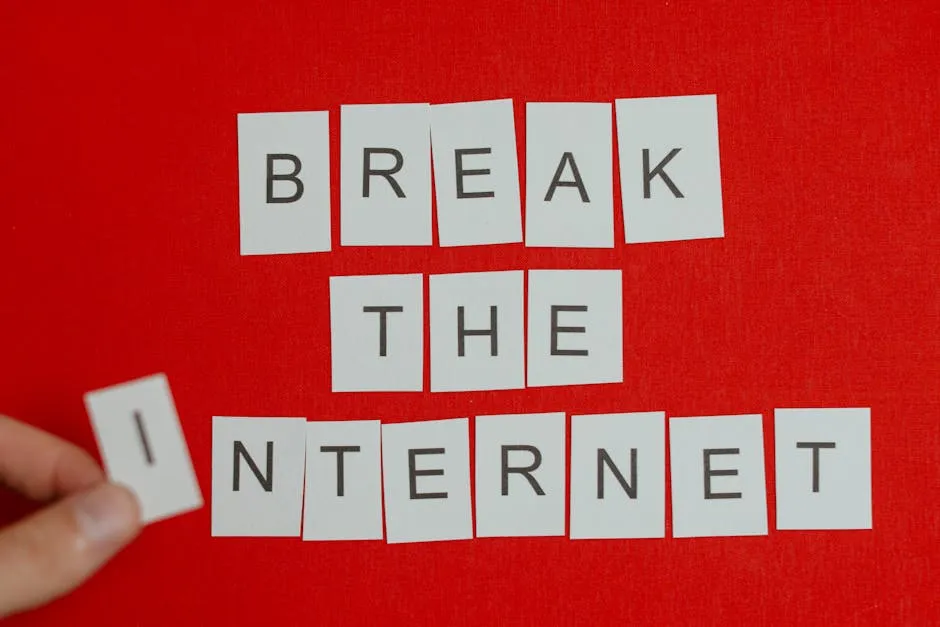
Real-life Implications
Fictional narratives can significantly shape our expectations and behaviors in relationships. These stories often portray characters with deep emotional scars, making their attraction seem romantic or heroic. The allure lies in the drama and intensity, creating a false sense of what real love should look like. When we consume these narratives, they become our reference points for real-life connections.
Take, for instance, movies like A Star is Born or Eternal Sunshine of the Spotless Mind. Both films feature protagonists who are battling their demons while navigating complicated love stories. Their struggles resonate deeply, making viewers feel that love can be salvaged through pain. These portrayals can lead to unrealistic expectations. We start believing that love must be tumultuous to be meaningful.
Books also contribute to this phenomenon. For example, A Little Life follows the lives of four friends, delving into trauma, love, and the bonds that hold them together. Readers often find themselves captivated by the characters’ struggles. However, this can reinforce the idea that love is intrinsically linked to suffering.
As we indulge in these narratives, we might unconsciously seek out partners who embody similar struggles, thinking we can replicate that intense connection. This can set the stage for unhealthy dynamics. The excitement of loving a “damaged” person might overshadow the need for stability and mutual respect.
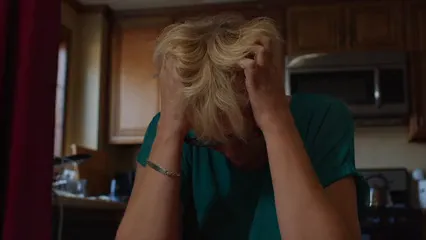
Breaking the Cycle: Healing from Trauma Bonds
Recognizing Unhealthy Patterns
Identifying if you’re in a trauma bond is crucial for your emotional well-being. Start by examining your relationship dynamics. Do you feel like you’re on an emotional rollercoaster? If your relationship oscillates between extreme highs and lows, that’s a red flag. Consistent feelings of anxiety, confusion, or obligation to “fix” your partner can signal that you’re caught in a cycle of trauma bonding.
Look out for signs like obsessive thoughts about your partner or feeling responsible for their emotional state. If you find yourself sacrificing your needs for theirs or feeling guilty for wanting to prioritize self-care, these patterns may indicate an unhealthy attachment. It’s essential to acknowledge these feelings and understand that they are not a reflection of healthy love.

Steps to Healing
Healing from trauma bonds begins with self-awareness. Acknowledge your emotional wounds and recognize how they might influence your relationship choices. Self-reflection can shed light on patterns rooted in your past, helping you understand why you might be attracted to individuals with similar traumas.
Therapeutic approaches can be invaluable in this journey. Cognitive Behavioral Therapy (CBT) helps individuals challenge harmful thought patterns, while Eye Movement Desensitization and Reprocessing (EMDR) targets traumatic memories to reduce their emotional charge. These methods can empower you to reclaim your narrative and reshape your beliefs about love and relationships.
Personal growth is equally important. Focus on cultivating a strong sense of self-worth. Engage in activities that bring you joy and fulfillment outside of relationships. Building a supportive network of friends who encourage emotional health can also provide a solid foundation for healing.
Breaking free from trauma bonds is not just about distancing yourself from unhealthy relationships. It’s about understanding your past, fostering self-love, and learning to seek connections that promote mutual growth and respect. Prioritizing self-awareness and healing can lead you toward healthier, more fulfilling relationships that nourish your spirit rather than drain it.

Seeking Healthy Relationships
Cultivating healthy relationships is essential for personal growth. Here are some tips to help you foster connections that uplift and support both you and your partner.
First, prioritize self-care. You can’t pour from an empty cup. Taking time for yourself ensures you maintain your emotional well-being. Engage in activities that recharge you, whether it’s reading a book, going for a walk, or indulging in your favorite hobby. A happy you attracts healthier relationships.
Speaking of reading, if you’re looking for a transformative experience, check out The Power of Now by Eckhart Tolle. It’s a fantastic guide to spiritual enlightenment that can help you on your journey to self-awareness.
Next, set boundaries. Boundaries are like invisible fences that keep your emotional garden safe. Communicate your limits clearly. If something bothers you, speak up! Remember, it’s okay to say “no.” When both partners respect each other’s boundaries, it creates a safe space for sharing and vulnerability.
Additionally, practice active listening. Really hearing what your partner is saying goes a long way. Nod, ask questions, and show genuine interest. This fosters trust and connection. Plus, it makes the other person feel valued, which is a beautiful thing!
Seek mutual growth. Relationships should be a two-way street. Support each other’s dreams and aspirations. Celebrate your partner’s successes, no matter how small. When both partners invest in each other’s growth, the relationship flourishes, creating a bond that withstands challenges.
Lastly, don’t forget to have fun! Laughter is a powerful tool in maintaining a healthy relationship. Plan adventures, share silly moments, and enjoy each other’s company. The more joy you share, the stronger your connection will become.
By prioritizing self-care, setting boundaries, listening actively, supporting each other, and having fun, you’ll cultivate relationships that promote mutual growth and support. Remember, healthy relationships are built on respect, trust, and kindness. So, go ahead and nurture those beautiful connections!
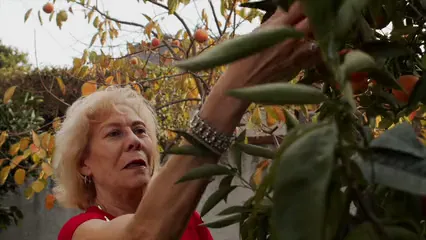
Conclusion
Understanding why traumatized people can be attractive is key to navigating our emotional landscapes and relationships. By recognizing the psychological underpinnings and societal influences that shape our attractions, we can foster healthier connections and break free from destructive patterns. Ultimately, the journey towards healing and healthier relationships begins with self-awareness and the courage to confront our past.
When we acknowledge that attraction often stems from shared pain, we can begin to discern between fulfilling relationships and those driven by trauma. It’s crucial to understand that while the allure of a connection with someone who carries emotional scars can be strong, it’s vital to ensure that these relationships don’t spiral into cycles of pain.
Trauma can ignite a spark, drawing us toward others with similar experiences. Yet, we must tread carefully. Emotional highs can feel exhilarating, but they often come paired with emotional lows. Recognizing these patterns is essential for breaking free from trauma-driven cycles that only bring heartache.
Moreover, our societal narratives often romanticize trauma, leading us to believe that love must be intertwined with suffering. This perspective can be misleading and harmful. True love should nurture and uplift, rather than perpetuate pain. By critically examining the media we consume and the stories we tell ourselves, we can reshape our understanding of attraction.
Another important aspect is self-reflection. We must ask ourselves why we are drawn to certain individuals. Are we seeking to heal our own wounds through another? Understanding our motivations can empower us to make healthier choices in our relationships.
As we embark on this journey toward healing, let’s embrace the idea of nurturing ourselves first. By prioritizing self-awareness, setting healthy boundaries, and engaging in supportive relationships, we can create spaces that promote mutual growth. It’s essential to surround ourselves with individuals who uplift and inspire us, rather than those who may inadvertently draw us back into cycles of trauma.
In conclusion, the path to healthier relationships begins with understanding our attractions and motivations. By recognizing the complexities of trauma-driven attraction and making conscious choices, we can build connections that not only enrich our lives but also encourage healing and growth. Let’s embrace the courage to confront our past and step into a future filled with love, understanding, and emotional well-being.

FAQs
Why do people feel attracted to those with trauma?
People often feel drawn to those with trauma due to empathy and shared experiences. It’s a way of connecting through mutual understanding of pain. The desire to help can also amplify this attraction, as many seek to heal others while filling their own emotional gaps.
Is trauma bonding a healthy aspect of relationships?
Trauma bonding can create intense connections, but it often leads to unhealthy dynamics. These relationships are marked by cycles of emotional highs and lows, making it challenging to establish stability. Recognizing and addressing these patterns is crucial for fostering healthier connections.
How can one break free from unhealthy attraction patterns?
Start by recognizing your attraction patterns and seeking therapeutic help. Self-awareness is key. Engage in reflection to understand your motivations and triggers. Building a supportive network can also help you move towards healthier relationships.
Can media influence our perception of trauma in relationships?
Absolutely! Media often portrays trauma in a romanticized light, which can distort our expectations of real-life relationships. Understanding this influence can help individuals seek healthier connections rather than those driven by dramatic narratives.
Please let us know what you think about our content by leaving a comment down below!
Thank you for reading till here 🙂
To better understand how to manage emotional challenges, check out this article on why coping strategies are essential for handling anxiety in daily life.
All images from Pexels




